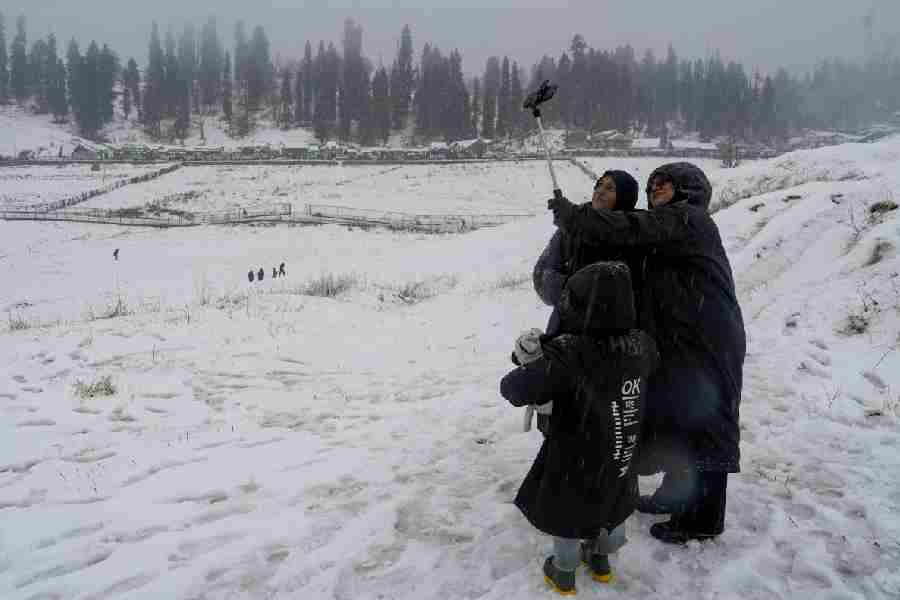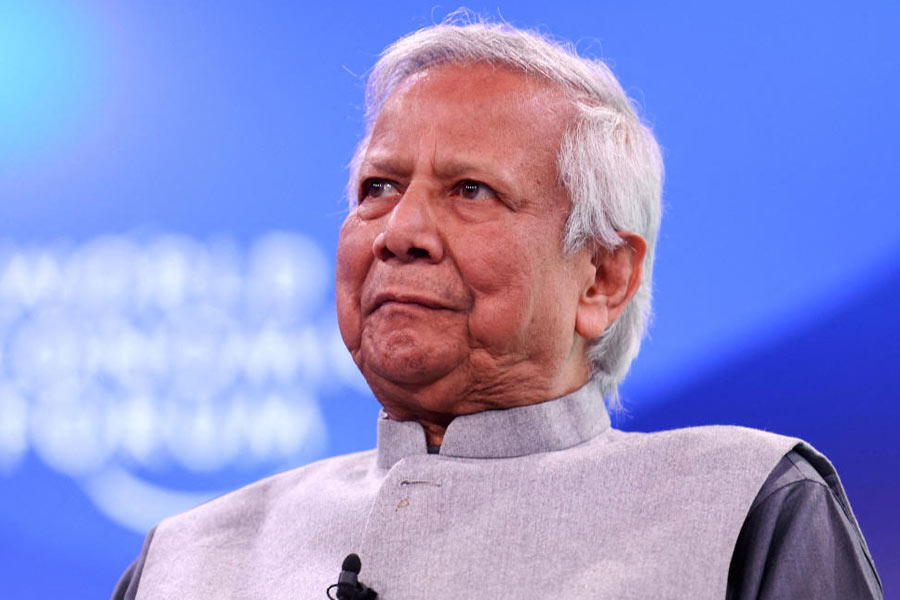 |
| Winter haunt of bar-headed geese; the bird (below) |
 |
 |
When B.M. Somashekhar received his transfer orders to TG Halli Lake two months ago, the first things he packed were his binoculars and one of Salim Ali’s books on bird-watching. “About 50,000 birds migrate here every winter,” says the Bangalore Water Supply and Sewerage Board (BWSSB) executive engineer, as he stands beside the sprawling 2.5-square-mile lake.
Though TG Halli ? short for Thippagondanahalli ? is located just 30 km from Bangalore, it hasn’t found favour with the city’s weekend tourists. The only buildings near the lake are a row of run-down BWSSB staff quarters and school. Which is why, away from the hustle-and-bustle of the city, Somashekhar was looking forward to giving some quality time to the migratory birds, which start flying in from across the world by end-November.
But that was not to be. A surprise assignment landed last week. The executive engineer was asked to get the BWSSB guest house renovated double quick.
State forest officials will be camping at TG Halli this winter. It’s not a new-found avian affection. The forest officials will be on the lookout for symptoms of the dreaded H5N1 virus among the visiting bar-headed geese (so-called because of two horizontal stripes on their heads), cormorants (a large family of fish-eaters) and black-headed gulls (described by bird experts as sociable, quarrelsome and noisy). The flocks will be flying to TG Halli from China ? where 6,000 birds died at the Qinghai Lake of suspected avian flu in May this year. And, the government says, they will be suspect till proven innocent.
This winter, the winged visitors can expect a rough landing in India. To counter a possible avian flu attack in the country, the ministry of environment and forests has rolled out a massive field surveillance exercise, involving health experts, forest department officials, ornithologists and even amateur bird watchers. Officials will monitor 50 bird sanctuaries across the country. State animal husbandry departments will collect blood samples from migratory birds and from poultry farms in the vicinity of bird sanctuaries.
“The bird flu threat is very real in India,” says S. Sridhar, founder trustee, Institute of Natural Resources Conservation, Education, Research & Training (INRCERT), Bangalore ? which is working with the state forest department on educating local-level officials on how to watch out for the flu. “India is on the itinerary of migratory birds. They shed large quantities of virus in droppings and secretions. There is a risk of the virus being passed on to poultry in India,” says Sridhar.
But many in and around Bangalore are not so sure. Ornithologists, in fact, scoff at the suggestion. Dead ducks don’t fly, says M.B. Krishna, ornithologist and founder-member of the Bird Watchers’ Field Club of Bangalore. “Migratory birds are agile and fly fast. Flu-infected birds cannot take the stress of migration. The argument has no basis,” he adds.
Many, like Krishna, feel that the flu threat is being blown out of proportion. The government’s haste to put the migratory birds under the microscope is unnecessary and can even lead to a fall in the number of the winged visitors, bird-lovers hold.
The Indian government doesn’t think so, as it moves its flu-fighting mission into fifth gear. The Karnataka forest department has identified 20 ‘hot spots’ around Bangalore, Mandya, Mysore, Belgaum and Tumkur that the bar-headed geese ? the prime suspect carrying the H5N1 virus ? visit. Forest officials will monitor each water body. “If any dead or sick bird is spotted, the area will be immediately sanitised and local people quarantined,” says Sridhar.
 |
| FLYING LOW: Black headed gull |
There is some hectic activity going on. The Karnataka Veterinary Animal and Fishery Science University (KVAFSU) is training forest officials and amateur bird watchers on studying bird behaviour and collecting blood samples. Classes started a fortnight ago. “Wild birds are highly sensitive to intrusion. Complete care has to be taken while catching them for blood sample collection,” says R.N. Srinivas Gowda, vice-chancellor, KVAFSU.
Every step is chalked out. The blood samples first go to one of the four regional disease diagnostic laboratories identified in Bangalore, Calcutta, Pune and Jalandhar, for initial tests. If the lab suspects the sample contains the H5N1 virus, it will be rushed to the government-run High Security Animal Disease Laboratory in Bhopal. “That’s because the virus is highly infectious,” says G. Krishnappa, director, Southern Regional Diseases Diagnostic Laboratory (SRDDL), Bangalore.
Also, state and district level committees ? comprising veterinarians, poultry industry representatives and ornithologists ? have been set up to monitor migratory bird movement. “They will review the flu status every month and report to the environment ministry,” says Krishnappa.
But Sridhar isn’t satisfied. “We’re talking about a possible poultry flu epidemic. Setting up committees isn’t enough. We need to act on a war footing,” he says. Speaking at the National Seminar on Bird Ecology, held in Bangalore last week, Sridhar suggested a radical plan of action. He said the government should go public about the looming threat, set up a centralised monitoring system with a toll-free number and put a cabinet-level minister on the job of battling avian flu.
But bird-lovers, on the other hand, call the flu-fighting exercise a national waste. “There are many diseases in the world and each one doesn’t turn into an epidemic. The only preparedness we need is to watch out for mass deaths among birds,” says Krishna.
Also, the government’s flu-finding plan is full of hitches, say avian experts. One, the sheer number of birds flying into India, their diversity and the geographic spread make bird surveillance a logistical nightmare. “Migratory birds come in lakhs and they visit lakes across the country. It’s impossible to monitor each one of them,” says J.N. Prasad, founder, Merlin Nature Club, Bangalore.
Moreover, training takes time. “Studying wild birds is a complex task. Forest officials can’t understand their behaviour patterns in just a few classes,” says Harish Kumar, member, Bird Watchers’ Field Club of Bangalore.
Prasad panics at the thought of wild birds being captured for blood sample collection. “It’s criminal to capture wild birds. They are sensitive and might fly away for good,” he says.
There are some who hold that the government has little cause for alarm, for Indian weather and farming patterns are not flu friendly. “The H5N1 virus cannot stand heat. It doesn’t stand a chance in Indian weather conditions,” says SRDDL’s Krishnappa.
Add to that India’s one-animal-only farming style. Europe and Southeast Asian nations follow a mixed farming system, where animals varying from pigs and poultry to cattle co-exist under one roof. “It makes an ideal mixing vessel for the virus to spread like wild fire,” says Krishnappa.
In India, poultry is reared in closed and confined areas. Europe follows a ranch system of rearing. “The possibility of contracting the bird flu virus is higher in open ranches,” says Gowda.
In fact, bird-lovers argue that wild birds don’t infect domestic birds ? it’s the other way round. “All wild birds with the H5N1 virus have been found close to contaminated poultry,” says Prasad. The infection at China’s Qinghai Lake was traced to a poultry farm in southern China. In Russia, avian flu spread along the rail track used to transport poultry.
Bird flu migrating to India is hypothetical humbug, say ecology experts. “Nowhere has it happened that wild birds have infected poultry,” says S. Subramanya, entomologist at the University of Agricultural Sciences, Bangalore, and an ornithologist. In fact, given the unhygienic poultry rearing conditions, wild birds have a bigger threat of getting infected with various viruses, he warns.
Bird-lovers feel the fuss over the flu is just another means of making a quick buck. “NGOs receive funds to do research on the subject. Pharmaceutical companies sell new vaccines,” says Krishna. “Everyone gains.”
Everyone, but the would-be visitors. Standing beside the still waters of the TG Halli Lake, Somashekhar worries about how his avian guests will take to being shadowed all winter.










